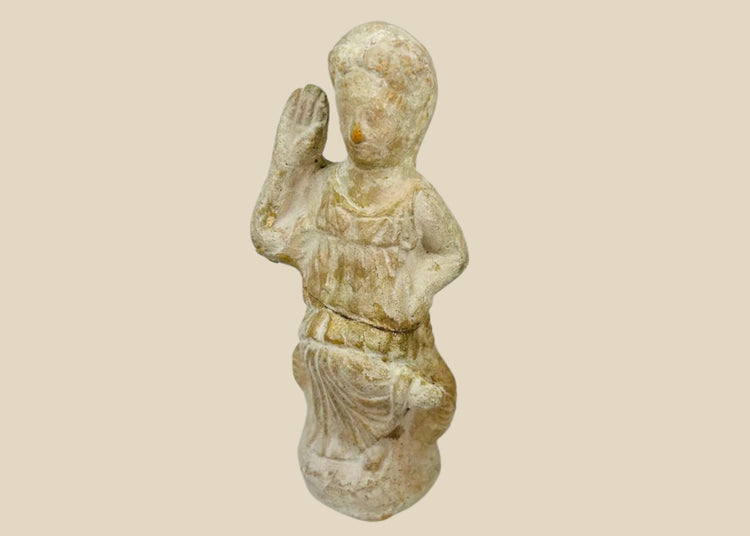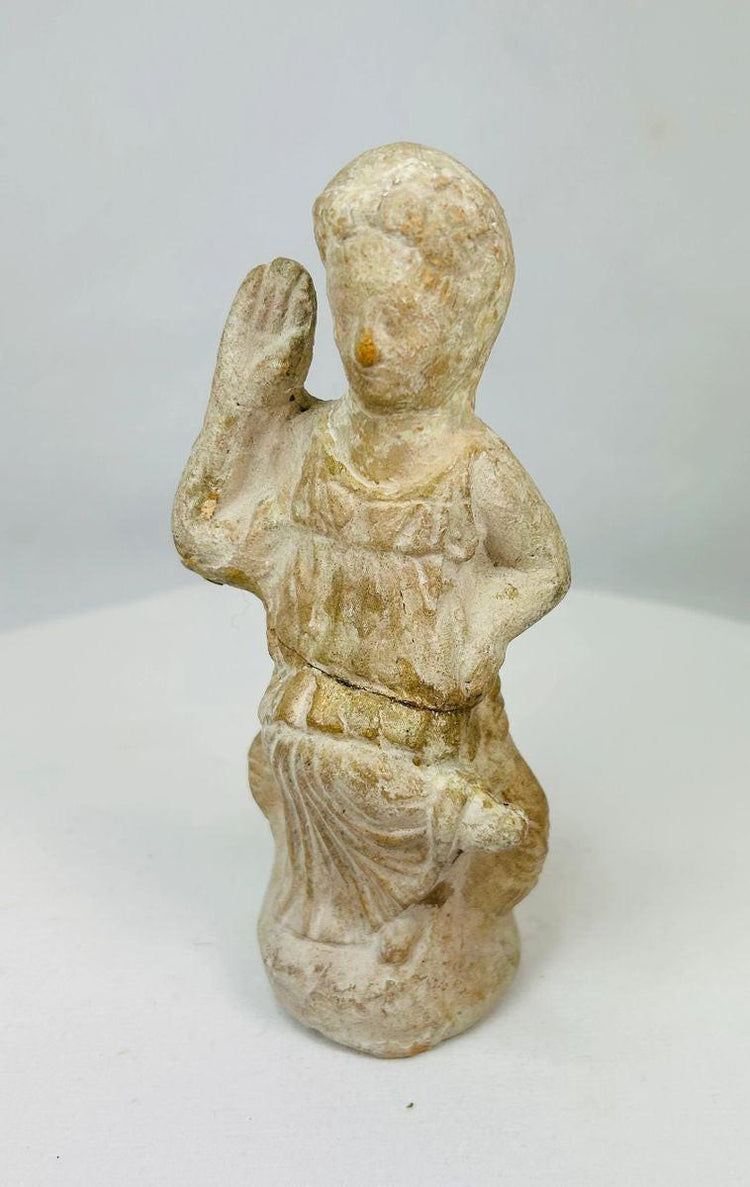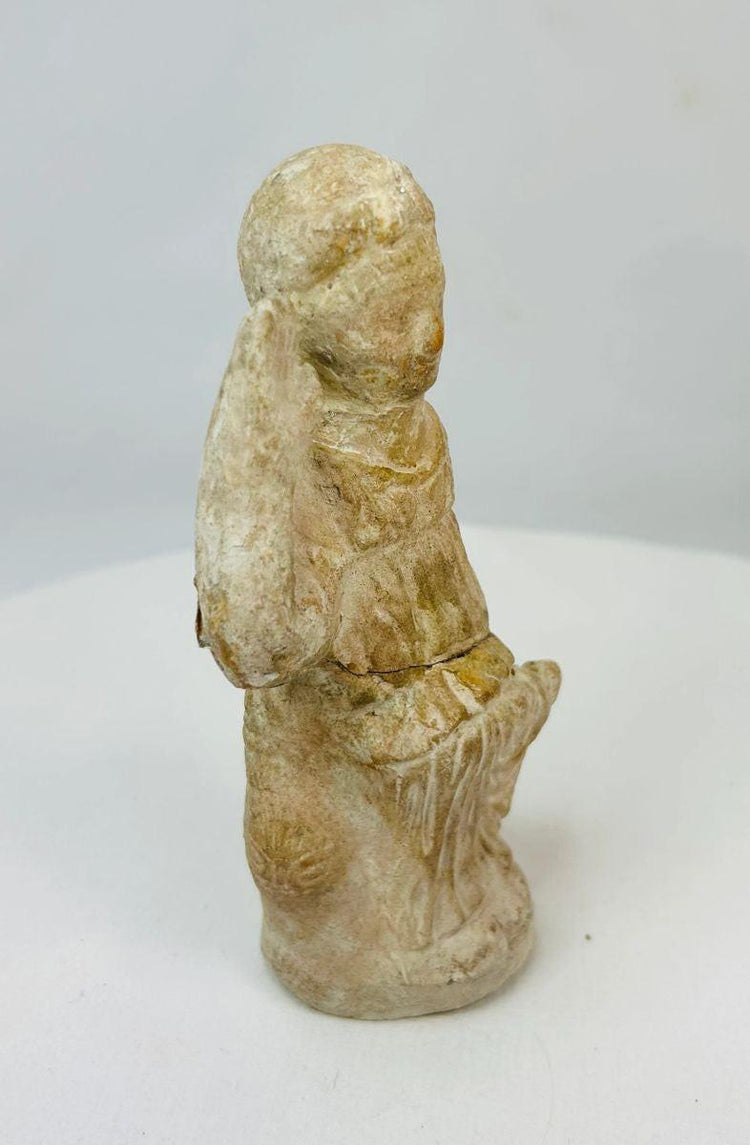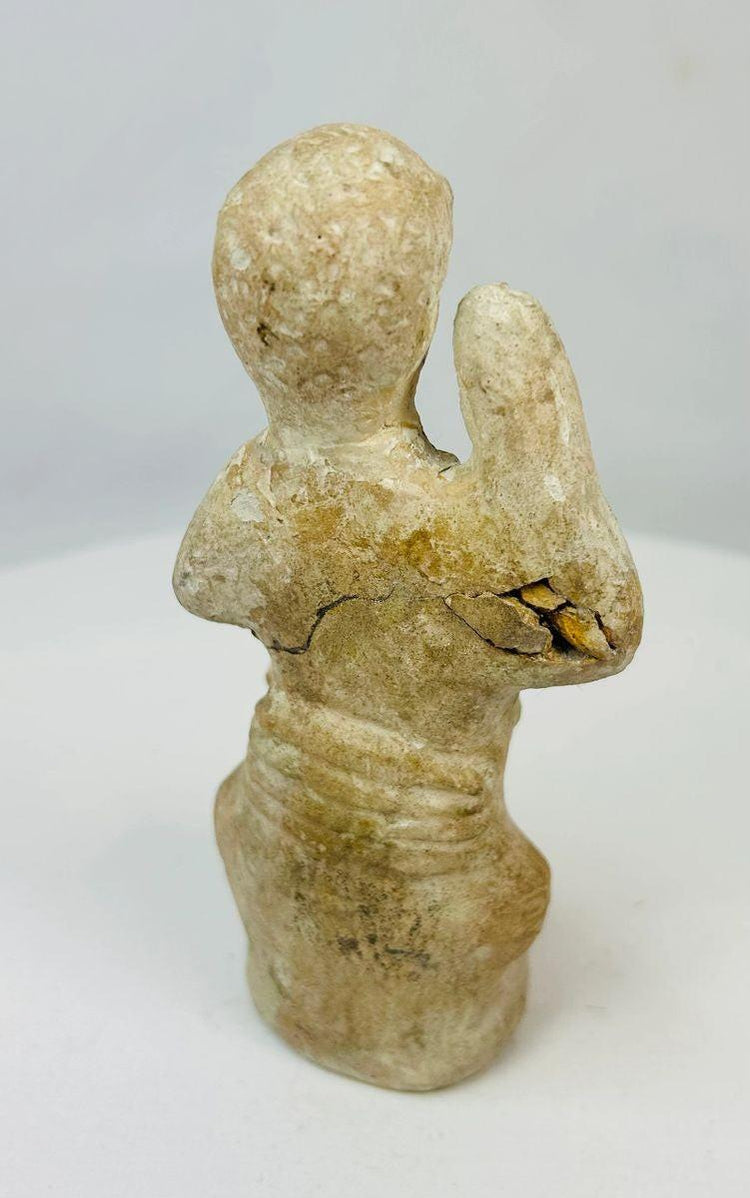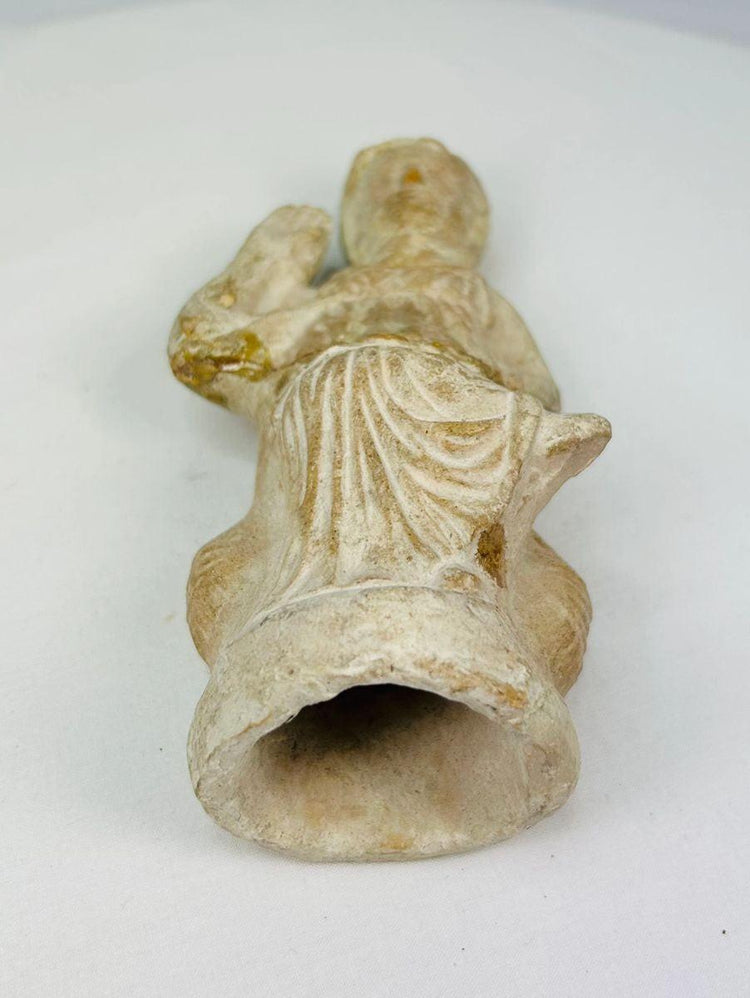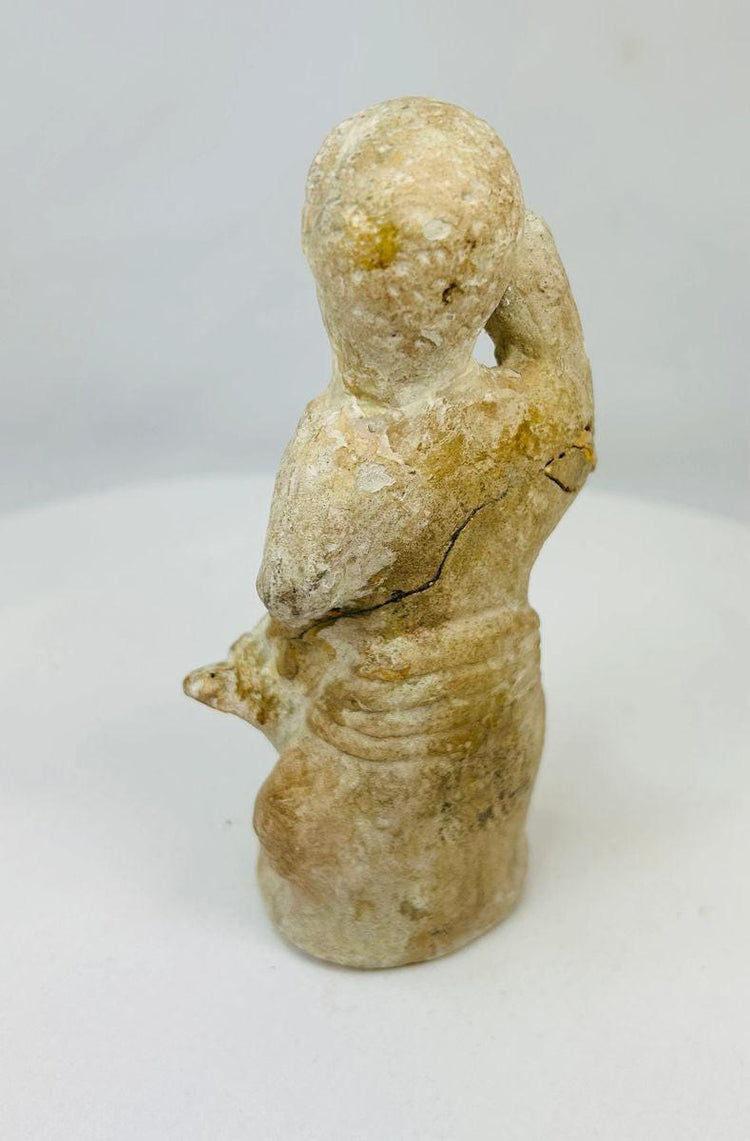Greco-Roman | Terracotta Figurine of a Goddess | Circa 1st-3rd Century CE
Description
More
Less
Historical Context & Origin
Region: Eastern Mediterranean
Material: Terracotta
Period: 1st–3rd Century CE
Description
This terracotta figurine depicts the goddess Isis, one of the most revered deities of the ancient world, worshipped across Egyptian and Greco-Roman cultures as a symbol of motherhood, magic, and divine protection. Crafted during a period of strong cross-cultural exchange, the figurine reflects the blending of Egyptian iconography with Roman stylistic influence. Isis is shown in draped attire, her garments rendered with flowing folds that capture the grace and elegance of her form. Her raised hand suggests a gesture of blessing or invocation, a common motif in religious art symbolizing divine favor. Likely serving as a votive object in a temple or a sacred item within a household shrine, this figurine embodies the deeply personal and devotional practices of the era.
Features
- Finely detailed drapery emphasizing movement and elegance
- Raised hand in gesture of blessing, invoking divine protection
- Molded with careful attention to form and symbolic posture
- Natural aged patina enhancing historical authenticity
- Compact size suited for temple or domestic devotional use
Cultural Significance
The cult of Isis spread widely during the Roman Imperial period, transcending its Egyptian origins to become a major religious tradition across the Mediterranean. Figurines like this served as both personal devotional objects and offerings placed within sanctuaries. They highlight the enduring appeal of Isis as a universal figure of compassion, maternal care, and mystical power, embodying the cultural synthesis of Egyptian and Greco-Roman religious traditions.
Condition
The figurine displays natural surface weathering and age-related cracks, consistent with centuries of burial and devotional use. Despite these signs of wear, it remains structurally intact, retaining strong facial and garment details. The patina enhances its historical authenticity, marking it as a genuine artifact of antiquity.
Dimensions (approximate)
Height: 5.75 in
Age
Over 1,700 years old
Description
Historical Context & Origin
Region: Eastern Mediterranean
Material: Terracotta
Period: 1st–3rd Century CE
Description
This terracotta figurine depicts the goddess Isis, one of the most revered deities of the ancient world, worshipped across Egyptian and Greco-Roman cultures as a symbol of motherhood, magic, and divine protection. Crafted during a period of strong cross-cultural exchange, the figurine reflects the blending of Egyptian iconography with Roman stylistic influence. Isis is shown in draped attire, her garments rendered with flowing folds that capture the grace and elegance of her form. Her raised hand suggests a gesture of blessing or invocation, a common motif in religious art symbolizing divine favor. Likely serving as a votive object in a temple or a sacred item within a household shrine, this figurine embodies the deeply personal and devotional practices of the era.
Features
- Finely detailed drapery emphasizing movement and elegance
- Raised hand in gesture of blessing, invoking divine protection
- Molded with careful attention to form and symbolic posture
- Natural aged patina enhancing historical authenticity
- Compact size suited for temple or domestic devotional use
Cultural Significance
The cult of Isis spread widely during the Roman Imperial period, transcending its Egyptian origins to become a major religious tradition across the Mediterranean. Figurines like this served as both personal devotional objects and offerings placed within sanctuaries. They highlight the enduring appeal of Isis as a universal figure of compassion, maternal care, and mystical power, embodying the cultural synthesis of Egyptian and Greco-Roman religious traditions.
Condition
The figurine displays natural surface weathering and age-related cracks, consistent with centuries of burial and devotional use. Despite these signs of wear, it remains structurally intact, retaining strong facial and garment details. The patina enhances its historical authenticity, marking it as a genuine artifact of antiquity.
Dimensions (approximate)
Height: 5.75 in
Age
Over 1,700 years old
You May Also Like


















